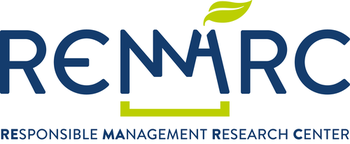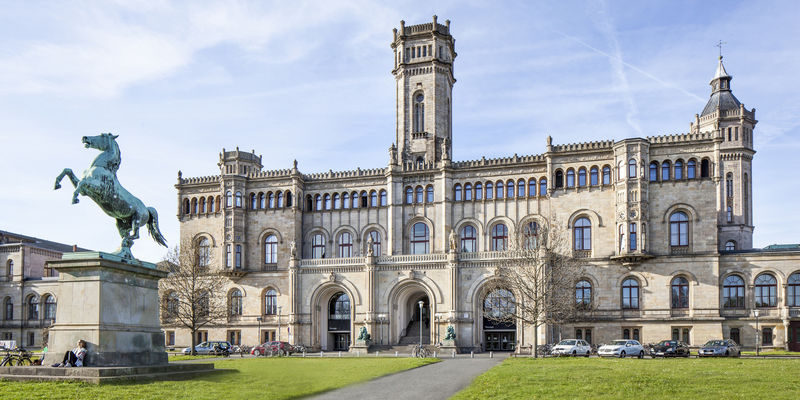Elisa Giuliani at Leibniz University Hannover to talk about Regional Economic Development, Human Rights and Inequality
Structure and schedule of the seminars:
-
- Session (6 May 2019):
Regional Economic Development and the Pro-Growth Agenda
In this session I will seek to introduce the conventional view-point of regional economic development research. Whether focused on productivity growth, innovation or spillovers, this agenda has for many years been dominant in economic geography. Drivers of regional growth and competitiveness have been investigated at large and the implicit motivation for this agenda has been the assumption that regional economic growth would have alleviated human suffering by strengthening institutions, democracies and lifting millions of people out of poverty. Yet, in so doing haven’t we forgotten something?- Bathelt H, Malmberg, A, Maskell, P. (2004): Clusters and knowledge: local buzz, global pipelines and the process of knowledge creation. Progress in Human Geography 28: 31-56.
- Bell M, Albu, M. (1999): Knowledge systems and technological dynamism in industrial clusters in developing countries. World Development 27: 1715-34.
- Cicerone G., McCann P. Venhorst V.A. (2019): Promoting regional growth and innovation: relatedness, revealed comparative advantage and the product space, Journal of Economic Geography, lbz001, https://doi.org/10.1093/jeg/lbz001
- Porter M. (1998): Clusters and the New Economics of Competition, Harvard Business Review, Nov-Dec.
- Sen, A. (1999): Development as Freedom. Oxford: Oxford University Press. Chapter 1.
- Session (7 May 2019):
Lost in Transition?
This session is on the pitfalls of the pro-growth agenda and, more specifically, it will focus on what is lost, rather than what is gained, though economic growth. I will conceptualize losses in terms of the deterioration in the enjoyment of universal human rights suffered by individuals or communities as a consequence of business firms’ operations as they (allegedly) contribute to regional economic growth. Today’s session will seek to spark critical thinking about the significance of such losses and seek to open up a conversation about whether they should be considered part and parcel of (and therefore factored in) regional economic development processes, rather than dismissed as undesirable negative externalities.- Barnett, J., Tschakert, P., Head, L., & Adger, W. N. (2016): A science of loss. Nature Climate Change, 6(11): 976–978.
- Lapegna P. (2016) Genetically modified soybeans, agrochemical exposure, and everyday forms of peasant collaboration in Argentina, The Journal of Peasant Studies, 43:2, 517-536
- Liu, L. (2010): Made in China: Cancer villages. Environment: Science and Policy for Sustainable Development, 52(2): 8–21.
- Maystadt, J. F., Calderone, M., & You, L. (2015): Local warming and violent conflict in North and South Sudan. Journal of Economic Geography, 15(3): 649–671.
- Selya, R. M. (2012): A geography of human rights abuses. Human Rights Quarterly, 34(4): 1045–1083. Stringer C., Michailova S. 2018. Why modern slavery thrives in multinational corporations’ global value chains, Multinational Business Review, https://doi.org/10.1108/MBR-04-2018-0032
- Session (6 May 2019):
- Session (8 May 2019):
Alternative pathways
This session discusses the multiple ways in which regions can grow and (fail to) account for their firms’ harmful impacts on society, human rights and the environment. It discusses the importance of thinking about regional development in alternative ways, and identifies possible directions to achieve a more responsible and sustainable economic growth. This session seeks to spark debate on how to achieve such goals and the role that companies or other actors (e.g. governments, non-governmental organizations, civil society etc.) can play in hindering or facilitating transitions towards a more sustainable society.
- Giuliani E. (2016): Human Rights and Corporate Social Responsibility in Developing Countries’ Industrial Clusters, Journal of Business Ethics, 133 (1): 39-54.
- Truffer, B., & Coenen, L. (2012): Environmental innovation and sustainability transitions in regional studies. Regional Studies, 46(1): 1–21.
- Schot J., Steinmueller WE. (2018): Three frames for innovation policy: R&D, systems of innovation and transformative change, Research Policy, 47 (9): 1554-1567.
- Giuliani E. (2018): Regulating global capitalism amid rampant corporate wrongdoing – Reply to “Three frames for innovation policy”, Research Policy 47 (9): 1577-1582
- Truffer B., Murphy J.T., Raven R. (2015): The geography of sustainability transitions: Contours of an emerging theme, Environmental Innovation and Societal Transitions, Volume 17: 63-72 Dallara, A., Rizzi, P. 2012. Geographic Map of Sustainability in Italian Local Systems. Regional Studies Vol. 46 Issue 3: 321-337.
- Session (9 May 2019):
Healing the ills: Symbolic and substantive responses to grand sustainability challenges
This lecture will look at evidence about the ways in which companies have sought to address their harmful impacts on humanity and the environment, and will discuss the hurdles involved in such processes. Focus will be on industrial clusters and their member firms’ inclusions in global value chain (GVCs): do small-scale cluster firms gain from participation in GVCs? Do global buyers favor processes of social or environmental upgrading? Are global buyers’ corporate social responsibility (CSR) policies affecting real practice in the value chain or, rather, the symbolic dimension of CSR prevails over the substantive one?
- Barrientos S., Gereffi G., Rossi A. (2011): Economic and social upgrading in global production networks: A new paradigm for a changing world, International Labour Review, Vol. 150, No. 3–4.
- Giuliani E., Ciravegna L. Vezzulli A., Kilian B. (2017): Decoupling standards from practice: The impact of in-house certifications on coffee farms’ environmental and social conduct, World Development, 96: 294–314.
- De Marchi V., Di Maria E., Micelli S. (2013): Environmental Strategies, Upgrading and Competitive Advantage in Global Value Chains, Business Strategy and the Environment, Bus. Strat. Env.22,62–72.
- Lund-Thomsen, P., & Coe, N. M. (2015): Corporate social responsibility and labour agency: The case of Nike in Pakistan. Journal of Economic Geography, 15(2): 275–296.
- Porter, M. Kramer, MR. (2011): Creating Shared Value, Harvard Business Review. Jan/Feb2011, Vol. 89 Issue 1/2, p62-77.
- Ruwanpura, K. N., & Wrigley, N. (2011): The costs of compliance? Views of Sri Lankan apparel manufacturers in times of global economic crisis. Journal of Economic Geography, 11(6): 1031–1049.
- Session (10 May 2019):
Transforming the rhetoric: from ‘Health vs. Jobs’ to ‘Human rights vs. Extreme wealth’
When asked to decide about investing in human rights and environmental protection, companies and other decision makers often argue that such investments undermine financial performance and therefore are likely to condemn firms and their territories to slow growth or decline. Similarly, there is always a “health vs. jobs” fight when environmental (or health-related) struggles clash with companies’ profit-maximizing goals. Yet, is this accurate or it is fallacious? We know little about it. But we know that approximately 10 per cent of global GDP is estimated to end in tax havens and that within-country economic inequality has been increasing in several countries according to recent estimates. This has reached such extreme high levels in recent decades that, according to the 2018 Credit Swiss Global Wealth Databook, the richest decile holds 85% of the world’s wealth, and, as documented by Piketty and colleagues, between 1980 and 2016, the richest 1% of the global population captured 27% of total growth while the bottom 50% captured only 12%. Assuming these data are accurate, we face a world where millionaires take the world-wide generated wealth by storm, squeezing out the poorest and – increasingly– the middle class. If not properly addressed, inequality will lead to important political and social catastrophes. In this final session we will discuss the plausibility of reframing the dominant ‘health vs. jobs’ rhetoric into a ‘human rights vs. extreme wealth’ one. By analyzing some concrete cases, I will lead students to open up the black box of companies financial viability, to assess whether the internalization of the costs that would be necessary to ensure environmental and human rights protection interferes with the financial viability of the firm, or, rather, with the process of abnormal wealth accumulation by corporate elites.- Alstadsaeter A., Johannensen N., Zucman G. (2018): Who owns the wealth in tax havens? Mcro evidence and implications for global inequality, Journal of Public Economics, 162: 89-100.
- Alvaredo, F., Chancel, L., Piketty, T., Saez, E., & Zucman, G. (2018): World Inequality Report. https://wir2018.wid.world/
- Bivens J., Lawrence M. (2013): The Pay of Corporate Executives and Financial Professionals as Evidence of Rents in Top 1 Percent Incomes, Journal of Economic Perspectives, 27 (3): 57-78.


